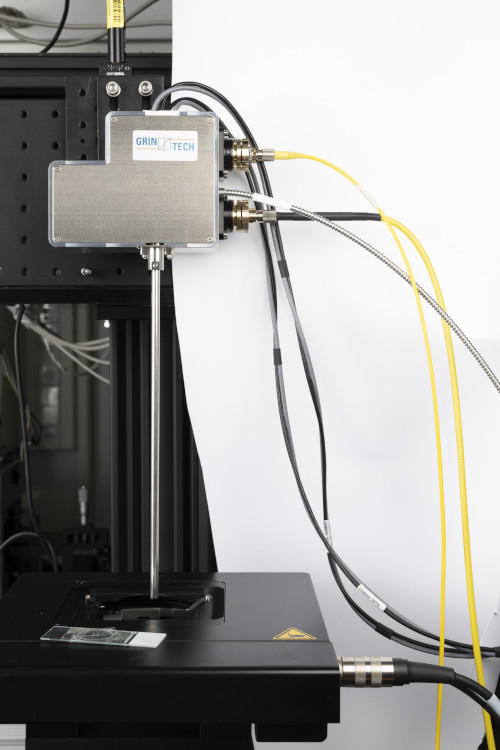
14 Jan Detecting and removing tumors with laser light
Removing a tumor completely without damaging healthy tissue is one of the greatest challenges in cancer surgery. Previous methods, such as tissue removal during the operation, only provide clarity about the success of the treatment after the surgery. At the Leibniz Institute of Photonic Technology (Leibniz IPHT) in Jena, a team in collaboration with Friedrich Schiller University (FSU), Jena University Hospital (UKJ) and the Jena-based company Grintech has developed an endoscope that, according to the researchers, works with light and artificial intelligence to precisely detect tumor boundaries without the need for colored tissue markers.
Diagnosis and therapy combined
According to the team, the exceptional feature of the new technology is that diagnosis and therapy are combined in one device. An integrated femtosecond laser precisely removes diseased tissue without damaging surrounding healthy tissue. “The principle of ‘detect and treat’ is a major step forward because it makes operations safer and improves the chances of recovery,” emphasizes Prof. Dr. Orlando Guntinas-Lichius, Director of the Department of Otorhinolaryngology at Jena University Hospital. “For us as surgeons, this means that we can remove tumors more effectively and at the same time better preserve healthy tissue. This could significantly reduce the number of follow-up operations and the burden on patients.”
The researchers report that this principle has already been successfully tested in preclinical trials with tissue samples from 15 patients. The technology achieved a detection accuracy of 96% and was able to remove tumor tissue with unprecedented precision.
Optical precision technology from Jena
A significant contribution to the development of the technology comes from the Jena-based company Grintech, which developed the high-precision miniaturized optical components for the endomicroscope and assembled them into a complete applicator system. The researchers explain that this should enable the detailed visualization of tissue structures and their chemical composition with the same quality as large laboratory microscopes. “The close collaboration between industry, clinics and research here in Jena has made this innovation possible,” says Dr. Bernhard Messerschmidt, Managing Director of Grintech.

IDeveloped in Jena: The probe combines diagnostics and therapy and enables the precise detection and removal of tumor tissue during surgery using laser light. Image: Sven Döring/ Leibniz-IPHT
Initial tests for clinical use
The development of the technology is part of the TheraOptik project funded by the German Federal Ministry of Education and Research (BMBF). The technology is currently in the preclinical test phase. The next step will be a clinical trial with a larger group of patients. “Our aim is for this light-based procedure to be used as standard in cancer surgery in a few years’ time,” explains Prof. Dr. Jürgen Popp, Scientific Director of the Leibniz IPHT and Director of the Institute of Physical Chemistry at the University of Jena, who says he and his team have been researching the technology for over a decade. In the long term, the researchers believe that the technology could also be used in other areas such as dermatology or neurosurgery.
Original publication:
Matteo Calvarese et al., Endomicroscopic AI-Guided Morphochemical Imaging and fs Laser Ablation for Selective Tumor Identification and Selective Tissue Removal. Sci. Adv. 10, eado9721 (2024). DOI: 10.1126/sciadv.ado9721
Source: www.leibniz-ipht.de
Image: Sven Döring/ Leibniz-IPHT






